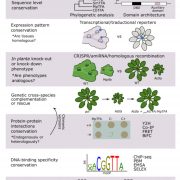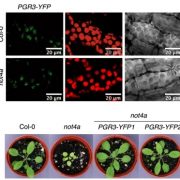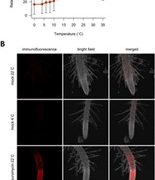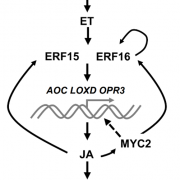
Recognizing Plant Cell authors: Om Prakash Narayan
The Plant Cell, The Plant Cell: Author ProfilesOm Prakash Narayan, first author of Sulfur transfer from the endophytic fungus Serendipita indica improves maize growth and requires the sulfate transporter SiSulT
Current Position: Postdoctoral Research Scholar, Tufts University, Boston, USA
Education: Ph.D., Jawaharlal Nehru University, New Delhi,…

Recognizing Plant Physiology authors: Limeng Zhou
Plant Physiology, Plant Physiology: Author Profiles
Limeng Zhou, co-first author of The Gibberellin Signaling Negative Regulator RGA-LIKE3 Promotes Seed Storage Protein Accumulation
Current Position: Ph.D. student (The Chinese University of Hong Kong)
Education: I got my B.S. from Wenzhou University in 2015 and got a master’s degree from South…

Recognizing Plant Physiology authors: Yilong Hu
Plant Physiology, Plant Physiology: Author Profiles
Yilong Hu, co-first author of The Gibberellin Signaling Negative Regulator RGA-LIKE3 Promotes Seed Storage Protein Accumulation
Current Position: Postdoctoral fellow (South China Botanical Garden, Chinese Academy of Sciences)
Education: I got my B.S. from Nanchang University in 2013 and Ph.D. from…

Review: Molecular mechanisms involved in functional macroevolution of plant transcription factors (New Phytol)
Plant Science Research WeeklyTranscription factors (TFs) are very important actors through which evolution can operate. In every organism and system studied, starting with the seminal work of Jacob and Monod, they’ve been shown to be potent regulatory proteins. Here, Romani and Moreno review the contributions of plant transcription…

Review: The genetic control of succulent leaf development (COPB)
Plant Science Research WeeklySucculence provides plants with the ability to store water and is therefore commonly associated with plants from arid environments such as the familiar Aloe and Agave. Here, Heyduk reviews the genetic control of leaf succulence. Succulence usually involves large, highly vacuolated cells, but not surprisingly,…

The Arabidopsis NOT4A E3 ligase promotes PGR3 expression and regulates chloroplast translation (Nature Comms)
Plant Science Research WeeklyPentatricopeptide repeat (PPR) domain containing proteins are nuclear encoded with functions in the chloroplast, but regulation of PPR gene expression in the nucleus before import to the chloroplast has not been well studied. Bailey et al. identified and characterized the ubiquitin ligase NOT4A and its…

Cold translation: Ribosome-mediated translation inhibition senses cold stress in plants (bioRxiv)
Plant Science Research WeeklyA drop in ambient temperature adversely affects plant growth and development. While the primary molecular pathway in response to cold stress involves the expression of CBF transcription factors, Guillaume-Schöpfer and colleagues found cold stress-induced inhibition of ribosome translation machinery…

BONZAIs emerge as nodal regulators of osmotic stress responses (Curr. Biol.)
Plant Science Research WeeklyPlants launch their response to osmotic stress with a sudden spike in cytosolic Ca2+ levels, which subsequently leads to the accumulation of the phytohormone abscisic acid (ABA). This further initiates a chain of events including closure of stomata, large-scale transcriptional changes, retardation of…

Ethylene response factors 15 and 16 trigger jasmonate biosynthesis in tomato during herbivore resistance (Plant Physiol)
Plant Science Research WeeklyCrop damage and yield losses caused by herbivores have become major threats to global food security. Upon wounding and herbivory, plants rapidly accumulate high levels of jasmonates (JA). However, the mechanism underlying how JA biosynthesis is triggered by herbivore attack remains unclear. It is therefore…

